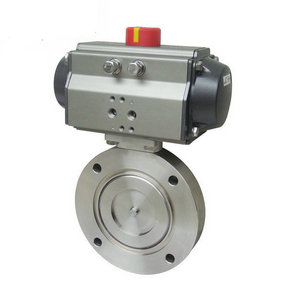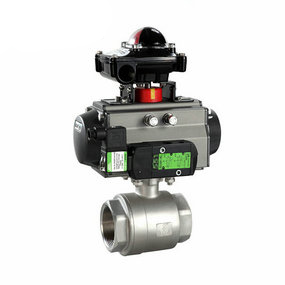How to connect the pneumatic fluorine lined flange butterfly valve to the gas pipe? Level IV is the commonly used leakage level. It is suitable for regulating valves with additional special sealed balanced metal metal seats and unbalanced single seat regulating valves. The test medium is 50~I25T (10~52 "C) air or water, and the test pressure is 45~60psi (0.3~0, 4MPa), which is lower than the maximum working pressure. During the test, the outlet end of the valve is directly connected to the gas or to the device for measuring the loss of the low-pressure head, and the actuator is adjusted to the maximum closing thrust state. The maximum allowable leakage of Level IV is 0.0l of the rated flow of the valve (Note ① The rated flow of the valve is the maximum flow that the valve can pass when the flow condition from the valve opening to the maximum rated stroke is exactly the same as that specified in the test procedure. ② This does not mean that the G value when the valve is closed is 0.0l of the maximum C value of the valve). As with Level VI, this level is not allowed to be extrapolated to the actual working condition of the valve. Grade IV only provides the original measured data of valve closing ability under low pressure difference and room temperature.

Butterfly valve is a kind of valve that uses the disc type hoist to rotate about 90 degrees to open, close and regulate the fluid channel. Butterfly valves are simple in structure, small in volume, light in weight, low in material consumption, small in installation size, small in driving torque, simple and rapid in operation, and can also have good flow throttling function and closing sealing characteristics. They are one of the fast developing valve varieties in recent years. Especially in the United States, Japan, Germany, France, Italy and other industrial developed countries, butterfly valves are widely used. The variety and number of butterfly valves are still expanding, and they are developing in the direction of high temperature, high pressure, large diameter, high sealing, long life, excellent regulation characteristics and one valve multi-function. Their reliability and other performance indicators have reached a high level, and have partially replaced the stop valves Gate and ball valves. With the progress of butterfly valve technology, butterfly valve will become the leading valve form.




